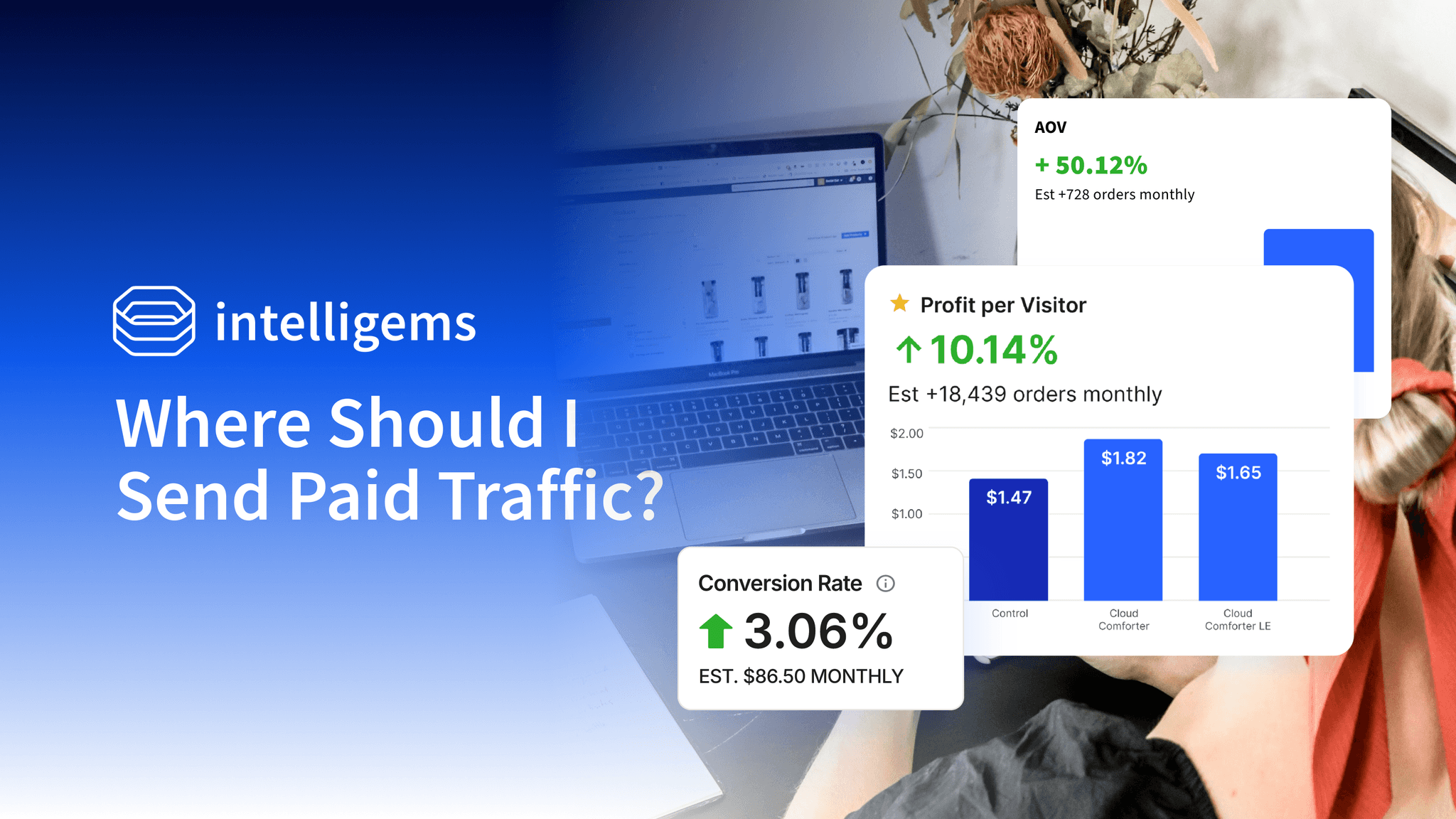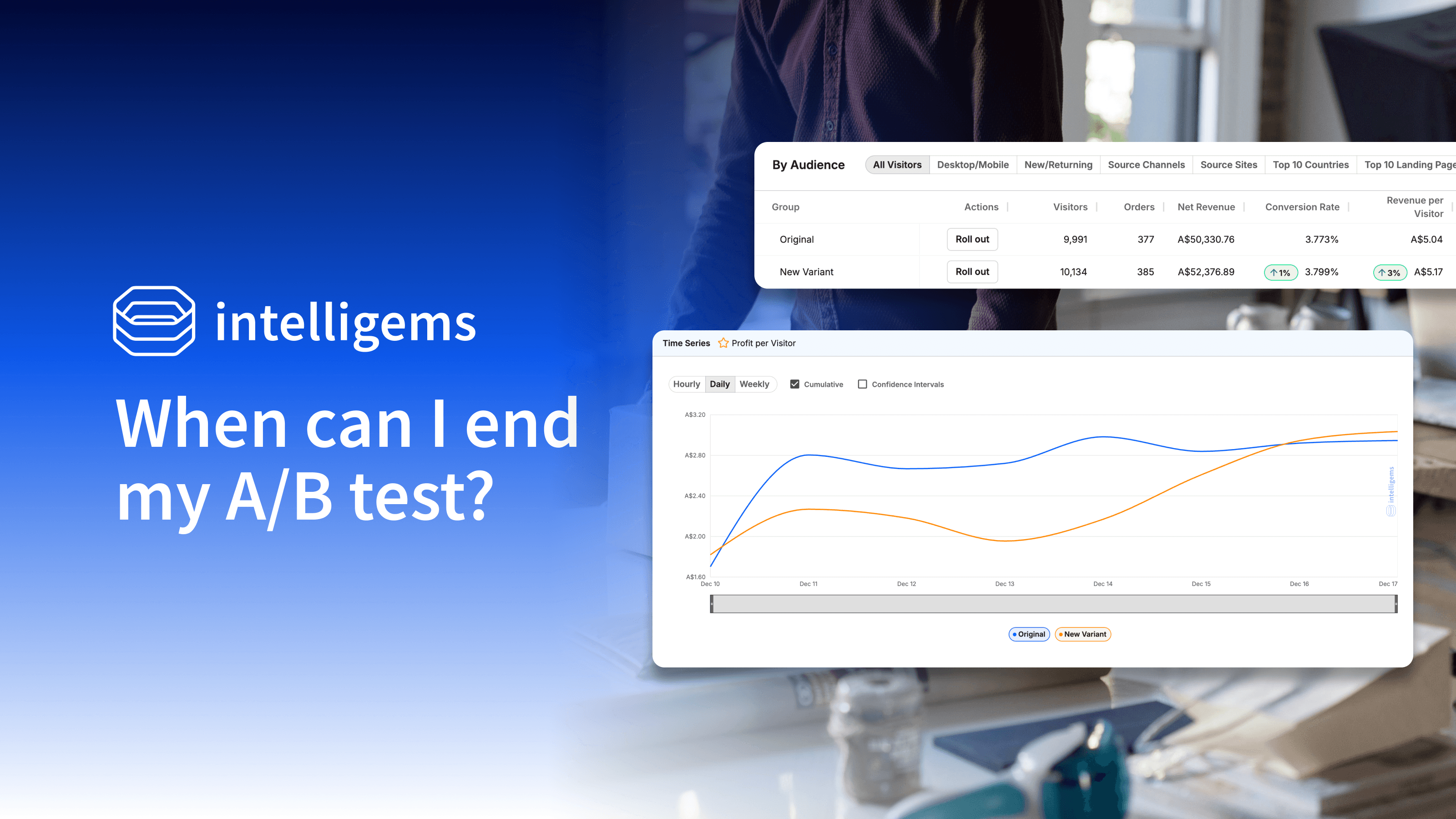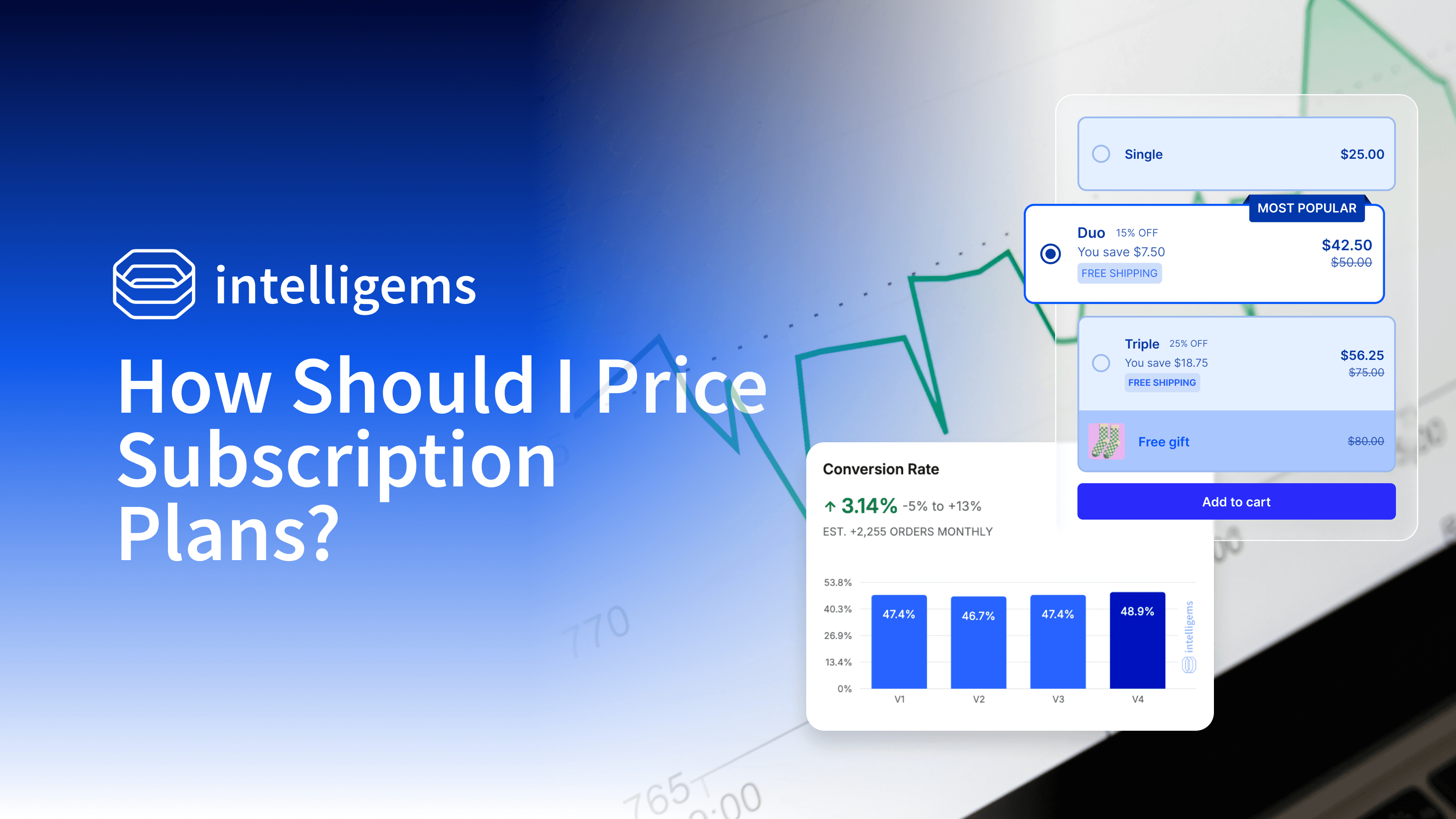AB Testing
Sep 6, 2024
The Ultimate Guide to A/B Testing During the Holidays
Discover how to maximize Shopify profits during a high-stakes shopping period with strategic holiday A/B testing.

Drew Marconi
A/B testing your Shopify store before a holiday is critical, but so is ongoing testing throughout the event. Unfortunately, most brands cut testing short to prioritize new orders ahead of a busy period. But that means they’re missing out on valuable customer learnings and higher profits.
To further boost your store’s performance during major holidays, you need to continue your ecommerce experimentation all the way through. Follow this guide to explore what makes holiday A/B testing so effective, which site elements to focus on, and our eight best practices for cashing in on a peak sales season.
3 reasons to A/B test during the holidays
Most Shopify merchants are too busy managing orders and customer inquiries to conduct A/B testing during prime sales events like Black Friday and Christmas. Even if they have extra bandwidth, it can be risky to experiment with new website elements that could jeopardize performance or cause technical issues.
However, holiday ecommerce experimentation can also secure high profitability and growth well after your campaign — thanks to three key benefits of holiday A/B testing.
1. Powerful holiday shopping data
Your customers’ shopping motivations change significantly during a holiday rush. They prioritize attractive pricing, limited-time offers, and gifts for loved ones. While this leads to some unexpected purchasing patterns, regular A/B testing will give you clear insights into your offers’ performance so you can continue to optimize — even throughout the holidays.
For example, your AOV or order quantities might skyrocket during a holiday period as customers look for more items at an overall lower price. To capitalize on this trend while maintaining your margins, you can test different discount amounts to see which one maximizes profits. Or, if you want to see what type of offer will promote the highest order value, you could compare a flat discount against a gift with purchase to see which one resonates most with your shoppers.
2. New customer insights
In addition to your existing customer base, you’ll likely encounter many first-time visitors during a busy shopping season. A/B testing helps you collect that influx of new customer data — including their distinct shopping preferences — and use it to fine-tune your targeting efforts beyond the holidays. This way, you can turn more first-time shoppers into repeat customers.
Let’s say you set up a test between two product headlines on Christmas — one using the word “sustainable” and one without. You might discover that the first title generates more conversions with first-time visitors, leading you to a new customer segment. Using this data, you can refine your CRO strategy to highlight eco-friendly items in CTAs, landing pages, and product descriptions. Or take it a step further by introducing new organic products to drive more conversions from your new audience.
3. Near-instant test results
Because new and regular customers drive high website traffic during the holidays, A/B testing throughout major shopping events will help you collect valuable data faster. This means that every adjustment to your website has the potential to inform your next campaign so you can increase conversion opportunities and capture more revenue.
For instance, A/B testing two layouts of your landing page on Black Friday can generate results in hours, allowing you to identify the winning layout and refine it in time for Cyber Monday.
Focus on high-impact store elements
It might feel impossible to tailor every website element in the midst of holiday shopping — but the good news is, you don’t have to. Instead, focus your efforts on optimizing the areas that drive the most value for your Shopify store with minimal disruption: promotions and content elements.
Create urgency with attractive promotions
Customers don’t like to miss out on limited-time deals, especially if they’re last-minute shoppers. What’s more, promotions can easily convert new visitors. Tapping into this sense of urgency with optimized holiday offers will drive even more conversions.
To find the lowest threshold for maximum results with every audience, A/B test different added-value perks like:
Different GWP tiers and products
GWP vs. % off
Sitewide % off (20% vs. 30%)
Volume discount (10/20/30% vs. 5/10/15%)
For example, a GWP is usually less attractive to customers, but the cost to your brand is significantly less. Testing these promotions with your specific segments will reveal which one increases conversions without ruining your margins.
Boost conversions with relevant on-site content
Each content element on your website, from landing page layouts to the color of your CTA buttons, is essential to a smooth path to purchase – especially for customers who are not familiar with your brand. A/B testing during the holidays will identify the best-performing content elements for new and returning customers.
To see which updates will resonate with your site visitors, experiment with:
Landing pages
Email/SMS sign-ups
Other non-UX changes (e.g., images, colors, CTAs, etc.)
For instance, if you're doing heavy ad spend and acquiring new customers during BFCM, you want to create a custom event to track how and why they signed up for messages (and whether they’ll stay with you). Finding the right method will help you increase acquisitions and build your lists for next year.
8 best practices to get the most out of your holiday A/B testing
Ecommerce experimentation can be stressful, especially while navigating other challenges, such as unconventional shopping behavior and price competition — but it doesn’t have to be.
By getting an early start on your holiday experimentation and using these best practices, you can avoid common drawbacks and ensure a smooth testing process.
1. Avoid major UX changes
Shoppers want a seamless on-site experience, and their expectations are even higher during the holidays. New buttons, checkout flows, or site navigation can cause technical issues or confuse returning customers, leading to abandoned carts and lost revenue.
To minimize disruptions to the shopping journey during your holiday experiments, test only high-impact elements on your site that do not affect its functionality — such as your promotions, images, and copy.
2. Plan early to avoid the last-minute rush
Mapping out your strategy in advance allows plenty of time to create A/B experiments for the key aspects of your website, test their efficiency, and adjust them in time for the busy sales period. The earlier you start, the better, but ideally, you should create a testing roadmap at least three to four months before the event. In your plan, include hypotheses about your promotions and content elements, as well as a list of priorities and launch dates. Then, A/B test your ideas.
3. Use SMART goals to create impactful tests
SMART (Specific, Measurable, Actionable, Relevant, and Time-Bound) goals will help you determine which A/B tests add the most value to your store during a peak sales season.
To identify these objectives, look back on your brand's previous holiday performance and challenges. Then, pick the leading one or two metrics that will help you accurately gauge success. Focus your test on elements that could impact that metric. For instance, if your SMART goal is to increase customer acquisition rates by 20% over the holidays, you might choose to test whether a pop-up collects more customer emails than a form on your product page. Additionally, testing SMS signups versus email will not only give you data on acquisitions but you’ll gain powerful insights into how your customers prefer to be contacted.
4. Test-drive your promotions during prior holidays
Once you’ve drafted your holiday A/B testing roadmap, pilot potential promotions on other holidays ahead of the busy season. This will give you a preview of valuable holiday shopping insights without the added pressure of affecting profits or conversions during the higher-stakes sales period.
To collect performance data that mimics events like Christmas or BFCM, select holidays that are likely to resonate with your target audience. Let’s say you want to see how different promotions impact profits. You might test with a large number of price-sensitive customers on discount-heavy shopping days like Labor Day. Or, if your holiday testing goal is to increase conversions for pet owners, try A/B testing custom banners on a holiday like National Cat Day (August 8) or National Dog Day (August 26).
5. Double down on QA
In order to ensure your holiday experiments are safe & effective, it is important to establish robust Quality Assurance (QA) practices prior to test launch. This process will surface test inefficiencies, broken website elements, and browser-related errors before they hinder your holiday strategy.
QA can be as simple as checking how CTAs, images, and offers appear across every browser and device and then making any necessary changes before you launch them on your site. Suppose you A/B test two holiday banners on your landing page, but one of them doesn’t show up for visitors using Microsoft Bing. QA-ing your tests will ensure accurate test results by preventing such issues in the first place.
6. Direct more traffic to your winning assets
While QA helps you avoid problems with your tests, continuously refining your tests multiplies your revenue opportunities. That’s why you should send website traffic to your top-performing content elements (e.g., landing pages, CTAs, etc.) and promotions as soon as you receive holiday test results.
To capitalize on winning test variants, monitor which variant leads to better outcomes based on your goals. For example, you might discover that a 20% discount generates high conversions for new customers, but your profits are depleting. In comparison, a 15% discount might optimize your profits but doesn’t move the conversion needle. If your goal is to increase profitability, you would redirect traffic to the 15% discount.
7. Track holiday performance this year to get ahead of next year
The best part of holiday A/B testing is you can use this year’s results to bolster next year’s holiday CRO plan. By collecting real-time shopping insights now, you can easily identify areas in your testing roadmap that need follow-up and continue refining your holiday strategy from year to year.
If a specific volume discount performed exceptionally well with your returning customers this year, test out lower discounts the following year. For instance, instead of 10%, 20%, and 30% tiers, you might try 5%, 10%, and 15%. This will help you maximize profits without impacting AOV. As a bonus, the data you collect next year and any learnings from it will inform future holiday tests.
8. Beware of skewed holiday A/B testing results
While holiday learnings are important, site traffic and behaviors can differ from your usual customer base. This means that your holiday A/B testing insights might not be applicable all year round.
To avoid bias in your insights and subsequent ecommerce CRO strategy, repeat tests after a busy season for further validation and record any new knowledge. For instance, if your gifts with purchase significantly increased AOV and conversions during the winter holidays, testing them in January will verify their performance when customers are less focused on deals.
Level up your holiday A/B testing strategy with Intelligems
Busy Shopify merchants need powerful A/B testing tools like Intelligems to create an effective holiday CRO strategy. Intelligems makes it easy for Shopify brands to test and optimize any aspect of their website for better profits and conversions all year round.
Built for Shopify brands: Intelligems integrates with your Shopify store in one click, ensuring accurate data and easy testing without extensive dev support or complex user authorizations.
All-in-one solution: Intelligems allows you to A/B test anything on your website to maximize profits — copy, volume discounts, images, and more.
Actionable analytics: Intelligems collects all the data that matters for your business and helps you understand test results at a granular level.
AB Testing
Campaigns
Content Testing







